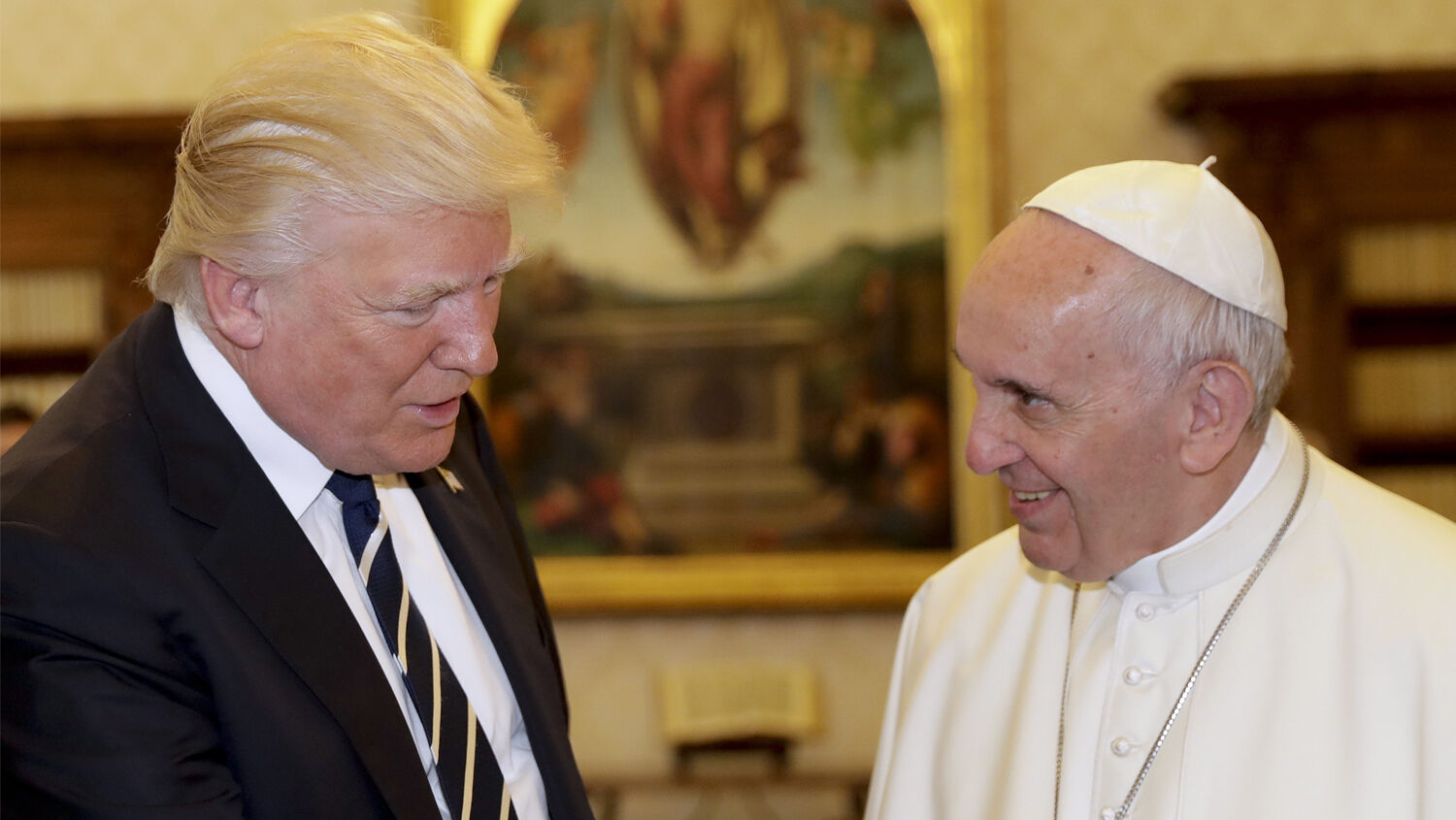
What Did President Trump and Pope Francis Talk About?
After visiting Saudi Arabia on Saturday and Israel on Monday, United States President Donald Trump arrived in Italy on Tuesday. Following his arrival at the Vatican, President Trump met with Pope Francis in a 29-minute private audience on Wednesday morning. According to the official Vatican statement, the two leaders discussed their joint commitment to life and freedom of worship. They also made particular reference to the situation of persecuted Christian communities in the Middle East.
During his campaign, Mr. Trump pledged to make the protection of persecuted Christians a cornerstone of U.S. foreign policy. He also pledged to overturn Obama-era restrictions on religious freedom, and to uphold “the dignity of human life from conception to natural, dignified death.” These are areas of consensus between President Trump and the Vatican.
“In advance of the meeting, officials from both the Vatican and the White House emphasized they wanted a friendly encounter, and today’s statement strikes that tone,” the staff of Crux Magazine reported. “It avoided any direct mention of past flashpoints between Trump and the pontiff, such as the president’s call for building a wall along the U.S.-Mexico border to halt the flow of immigrants or his reported consideration of abandoning the Paris climate change agreement that Francis and his encyclical letter Laudato’ Si helped to inspire.”
In many ways, President Trump and Pope Francis have emerged as leaders of rival power blocs. While Mr. Trump has positioned himself as the leader of a people’s rebellion against transnational elites, Pope Francis has condemned populism and called for new global institutions with the authority to redistribute wealth and combat climate change. Despite strained relations with Pope Francis and the U.S. Conference of Catholic Bishops, however, Mr. Trump still managed to garner 52 percent of the Catholic vote in the last election. In particular, he gained the support of a majority of white Irish Catholics in the Midwest, even as he lost Hispanic Catholics in the Southwest.
The Trump administration and the Vatican may cooperate on issues related to abortion and religious freedom in the short term, but the long-term interest of Washington and Rome do not align. As America and Britain begin to rebel against the notion of such a globalist political authority, transnational organizations like the European Union and the Union of South American Nations are looking to the Vatican for leadership.
The Bible actually has some strong things to say about a false church wielding great political and economic power in the time before Jesus Christ’s return. In Revelation 13, this church is depicted as looking like a lamb but speaking as a dragon. In Revelation 17 and 18, this church is labeled “Babylon the Great” and prophesied to rule a vast empire from a city with seven hills. In corresponding Old Testament prophecies in Isaiah 23 and Ezekiel 27, this empire is called Tyre, the most powerful trading center of the ancient Mediterranean world.
Based on these scriptures, Herbert W. Armstrong boldly predicted that the Catholic Church would gain influence over a transcontinental alliance, including 10 European kings and a network of Latin American states. With its left arm, this Vatican-dominated conglomerate will reach southward and eastward into the Middle East to conquer Jerusalem. Then with its right arm, this “Holy” Roman Empire will reach southward and westward across the Atlantic to take control of Latin America and to besiege the United States.
